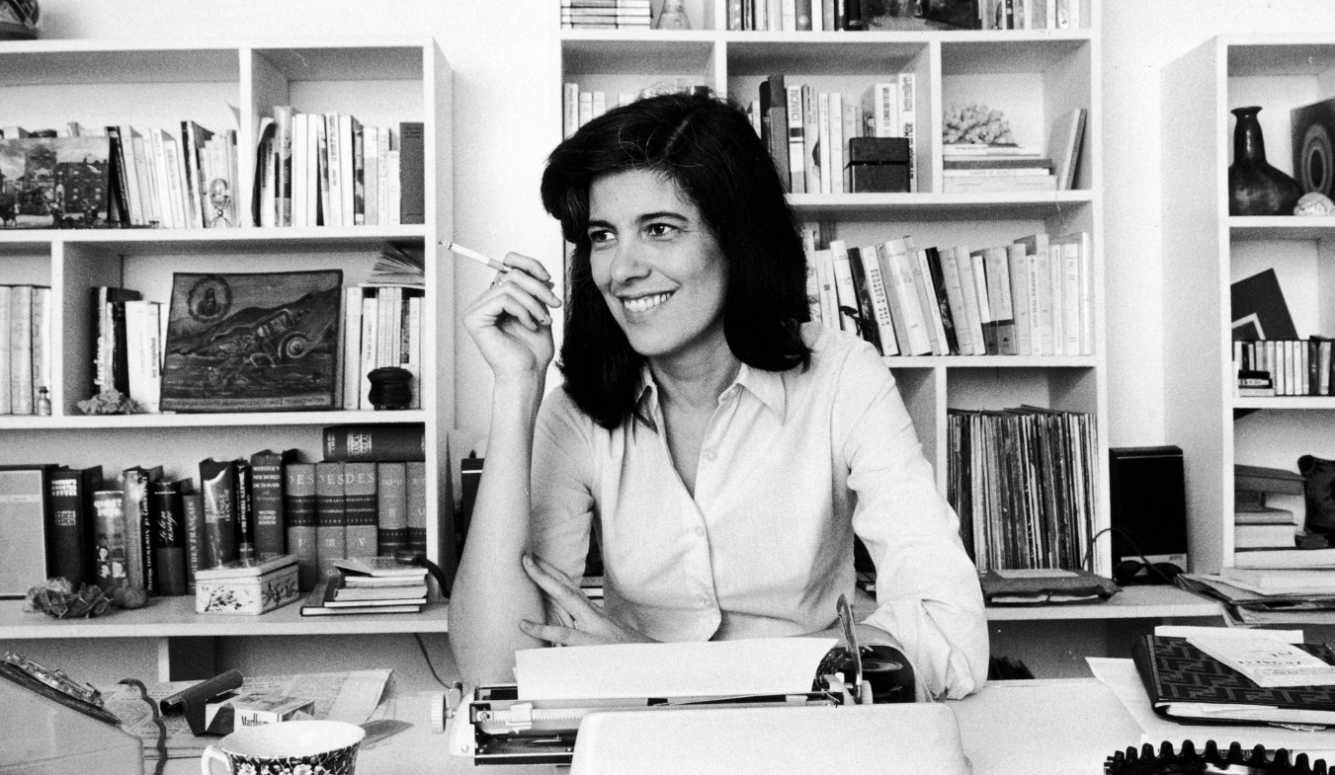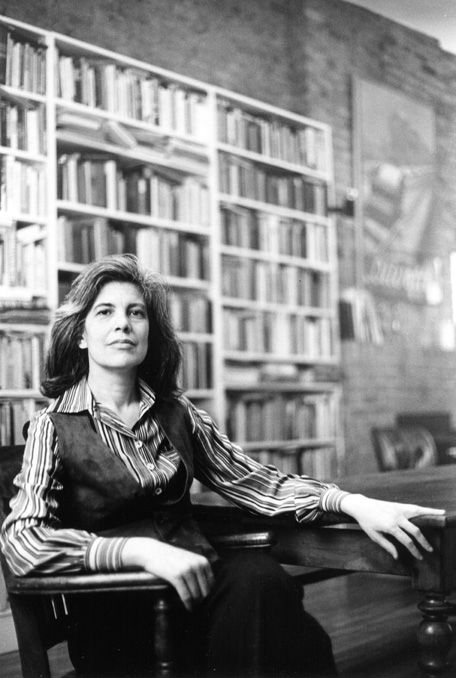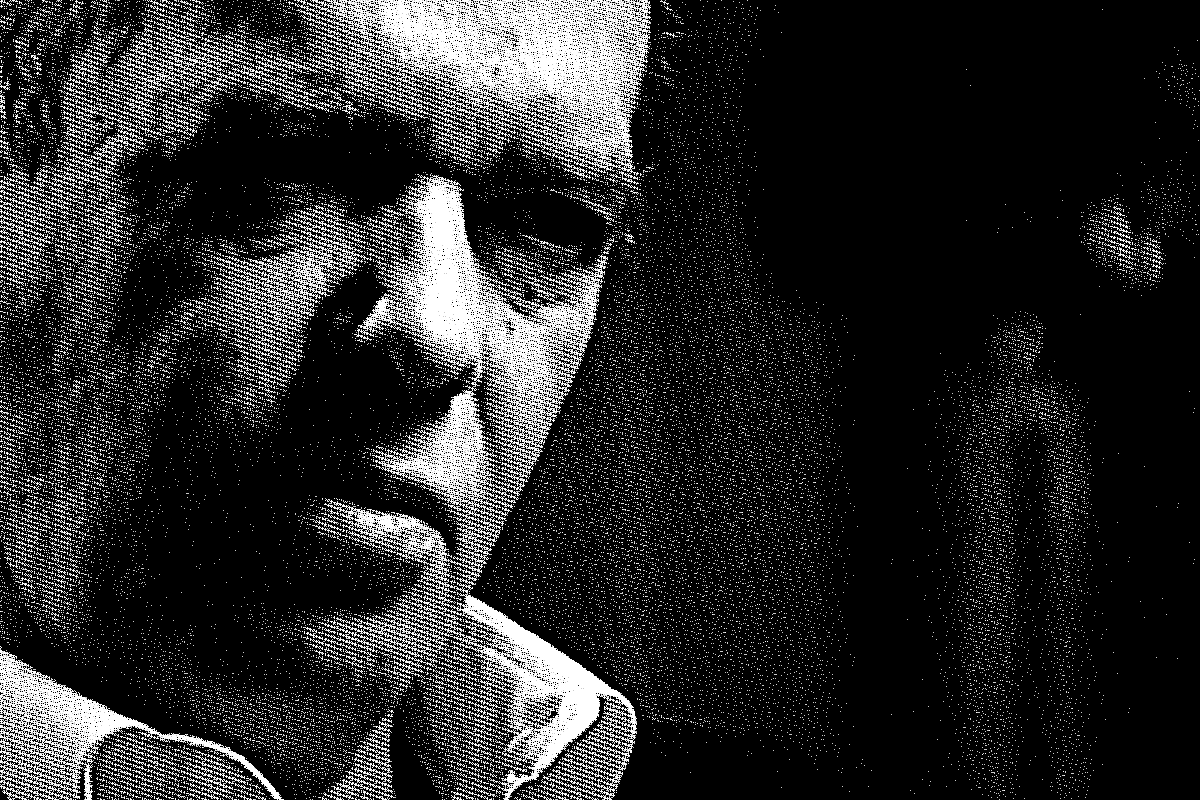Art and Culture
On Sontag
A new collection of essays from the mid-70s offers a frustrating glimpse of the author’s strengths and weaknesses.

A review of On Women by Susan Sontag, 208 pages, Hamish Hamilton (June 2023)
Critics do not appear to be especially impressed by Susan Sontag’s slim posthumous collection of essays, On Women. Although she praises some of the later essays in the Guardian, Olivia Laing concludes that it is “not a very good book about women.” Anna Leszkiewicz of the New Statesman claims that Sontag engages in “unsisterly arguments” and “is not interested in women as human beings, but as a political category.” At the Observer, Rachel Cooke dislikes the collection so strongly that she declares herself “amazed by [Sontag’s] reputation,” and wonders if Sontag suffered from “a particularly egregious case of internalised sexism.” An analysis of feminist essays from the 1970s is almost bound to produce some culture shock, but this collection, while flawed, is not the unqualified disaster these reviews imply.
It is important to bear in mind that the essays included in On Women (written 1972–75) are minor and unrepresentative of the work that earned Sontag cultural significance. A decade prior, in 1964, she had published a celebrated essay titled “Notes on Camp” in the highbrow journal Partisan Review. It was radical in content and form—a list of 58 points, each of which attempted to capture a different dimension of her nebulous subject. The closest Sontag managed to get to a single-sentence definition was: “The ultimate Camp statement: it’s good because it’s awful.” Camp might be a kind of Oscar Wilde dandyishness, or tiffany lamps, or stag movies “seen without lust,” or turn-of-the-century picture postcards—these phenomena, Sontag claimed, somehow huddled under the umbrella of what she called the “camp canon.” And it was the homosexual community—the “aristocrats of taste”—who Sontag believed really controlled camp’s direction.
Sontag’s identification and description of camp and its cultural importance was sharp, but it was not what brought her fame. More important was the appearance of her essay about lowbrow culture in the literary pages of Partisan Review (home of Malraux, Silone, Koestler, etc). This had two immediate effects. The cultural elite were suddenly permitted to discuss rock and roll and cheap horror films, and the creators of low culture suddenly found themselves transformed into an influential force on national taste.

But Sontag eventually grew to dislike her association with that essay. Though it was obviously agreeable to attain literary fame at the age of 31, the essay was not a serious enough foundation on which to build a reputation as an intellectual. Her biographer Jerome Boyd Maunsell notes that she “remained ambivalent about the essay, never writing on camp again and becoming irked when people asked her about it….” She seemed to want her readers to acknowledge that she had written on more important topics. Perhaps this is why Hamish Hamilton, the Penguin imprint responsible for publishing On Women, describes the book on the dust-jacket like this:
On Women brings together Susan Sontag’s most fearless and incisive writing on women, a crucial aspect of her work that has not until now received the attention it deserves.
So, how much attention does it deserve? Although this is a new book, the essays it contains are now 50 years old. Published nearly 20 years after Sontag’s death, On Women is decades older than her last collection of essays, Where the Stress Falls (2001). Chronologically speaking, it is much closer to her first book, The Benefactor (1963), than it is to her last, Regarding the Pain of Others (2003). And On Women looks and feels thoroughly contemporary, packaged in a way that is sleek, clean, and modern. It is minimal. Nothing about the design evokes the 1970s (there is nothing funky, groovy, or tubular)—instead, the cover is emblazoned with four giant words: the author’s name and the book’s title. On the back cover, Sontag gazes out at us as she lounges on a window ledge, leaning on books, letters, and scrap paper, her right knee drawn upward. She looks argumentative, intelligent, bookish, and she appears to be dressed in black (the image is monochrome).
Despite appearances, though, On Women can be turgid. The collection oscillates in quality—sometimes from one paragraph to the next—between verbally charged, high-powered argumentation and outdated, citation-free mumbo jumbo. In “The Third World of Women,” an interview conducted by the Marxist magazine Libre, Sontag urges women to:
…whistle at men in the streets, raid beauty parlors, picket toy manufacturers who produce sexist toys, convert in sizeable numbers to militant lesbianism, operate their own free psychiatric and abortion clinics, provide feminist divorce counseling, establish makeup withdrawal centers, adopt their mothers’ family names as their last names, deface billboard advertising that insults women, disrupt public events by singing in honor of the docile wives of male celebrities and politicians, collect pledges to renounce alimony and giggling, bring lawsuits for defamation against the mass-circulation “women’s magazines,” conduct telephone harassment campaigns against male psychiatrists who have sexual relations with their women patients, organize beauty contests for men, put up feminist candidates for all public offices.
If some of Sontag’s points sound ridiculous, that is her point. She illustrates how unflattering male behaviors like wolf-whistling are by encouraging them in the opposite sex. If it’s ridiculous when women do it, shouldn’t the same be true for men? She later suggests, in the same spirit, that “women should light men’s cigarettes for them.” Her irony is clear and her humor belies the seriousness of her point: behaviors ought to be judged independent of sex. Indecency is not exclusive to one or the other.
In the same interview, however, when Sontag is asked if she considers the family to be an obstacle to women’s liberation, she responds with this:
The glorification of the family is not only a piece of rank hypocrisy; it reveals an important structural contradiction in the ideology and workings of capitalist society. The ideological function of the modern family is manipulative—more accurately, self-manipulative.
Here, Sontag opts for jargon, obscurity, and prose-death. Her answer carries the stink of false erudition that sounds smart but says nothing, before she quickly moves on to a different subject, as if her statements had unpacked themselves. Clarity has been replaced by sloganeering obscurantism.
On Women opens strongly—if it is not exactly attention-grabbing, it is at least attention-fondling—and the first four essays are engagingly Sontagian. Her style here is polemical not lawyerly, analytical, or methodical—she is not concerned with the need to marshal evidence carefully or draw deductive conclusions. And although she explores topics that beg for statistical support—women in the workforce, domestic abuse and sexual assault, accessibility of birth control and abortion—she provides no data with which to substantiate her rhetorical flourishes. There are no footnotes or references in On Women and no index, but such conventions would only have cramped the cut-and-thrust of her radical style. She is highly quotable because she writes untraditionally. Her sentences do not build into a closely researched argument, they are her arguments—aphoristic and frequently combative.

One does, however, grow wary of the flurry of unsupported claims. In “The Double Standard of Aging,” for instance, Sontag claims that “women lie more than men do about their age,” and women are “not expected to be truthful, or punctual … or frugal.” She announces that it is a “fact” that “women are often late for appointments.” It’s a fact that women in the 1970s were often late for appointments? What kind of appointments? And according to who or what study? And where does Sontag gather that women aren’t expected to be truthful? It’s possible that women do lie more than men do about their age. But where is the evidence for any of this? Is she merely postulating from intuition?
When the aphorisms don’t land, we are left to scramble for a citation. But when they do land, they achieve a near-Nietzschean excellence in statements like these:
To be a woman is to be an actress. Being feminine is a kind of theater, with its appropriate costumes, decor, lighting, and stylized gestures.
Aging is a movable doom. It is a crisis that never exhausts itself, because the anxiety is never really used up.
How easy it is to start off by defining women as caretakers of their surfaces, and then to disparage them (or find them adorable) for being “superficial.” It is a crude trap, and it has worked for too long.
To be beautiful makes one singular, exceptional. But to be beautiful also means measuring up to a norm or rule (“fashion”). The paradox is partly eased when one remembers that beauty is one of those ideas—like truth, like freedom—that gets its meaning from its always being contrasted (if only tacitly) with an adversary, negative idea. But it would be naive to suppose that the “ugly” is only the opposite implied by the “beautiful.” Indeed, according to the very logic of fashion, the beautiful often has to seem—at first—ugly.
It would be nice to have both the style and the data. In the earlier essays in this collection, Sontag opted for the former, and the bet partially pays off. Considered in this light, Sontag’s relationship with feminism can seem murky, or at times, “unsisterly” as Leszkiewicz puts it. In “The Third World of Women,” Sontag maintains that “I have always been a feminist,” and her support for the movement appears to be straightforward:
I do not think socialism can triumph unless big victories for feminism have been won beforehand. The liberation of women is a necessary preparation for building a just society—not the other way around, as Marxists always claim. For if it does happen the other way around, women are likely to find their liberation a fraud. Should the transformation of society according to revolutionary socialism be undertaken without a prior militant independent women’s movement, women will find that they have merely passed from the hegemony of one oppressive moral ethic to another.
But Sontag’s commitment to feminism was publicly challenged two years later, during a 1975 disagreement with American poet and feminist Adrienne Rich on the letters page of the New York Review of Books, printed under the heading, “Feminism and Fascism.” Rich had written to the editors of NYRB objecting to Sontag’s recent essay, “Fascinating Fascism,” and both the essay and the subsequent exchange are reprinted in On Women. Sontag had had remarked that the Nazi filmmaker Leni Riefenstahl enjoyed a film career despite her past because “of the fact that she is a woman.” She added that “feminists would feel a pang at having to sacrifice the one woman who made films that everybody acknowledges to be first rate.”
In her reply, Rich claimed that the feminist movement had been “justly alert to and critical of women who have ‘made it’ in the patriarchy…” and went on to criticize Sontag’s work more generally. After “The Third World of Women” (which Rich commended), she wrote, Sontag’s work had suffered from an absence of “feminist values.” Sontag’s response leaves the impression that Rich was correct—Sontag had abandoned her feminist values or was at least impatient with what the movement was becoming. Sontag claimed, for example, that “like all capital moral truths, feminism is a bit simple-minded.” She added that Rich’s letter illustrated a “persistent indiscretion of feminist rhetoric: anti-intellectualism” and that “much of feminist rhetoric not only tends to reduce history to psychology but leaves one with a shallow psychology as well as a thinned-out sense of history.”

More from the author.
Who to believe? The 1973 “The Third World of Women” Sontag, who self-identified as a feminist and advocated for a revolutionary women’s movement? Or the 1975 “Feminism and Fascism” Sontag, who claimed that feminism is a simple-minded, shallow, anti-intellectual ideology with a thinned-out sense of history? Do these positions even conflict? Labeling feminism a “capital moral truth” and “simple-minded” in the same sentence is a paradigmatic Sontagian aphorism—provocative for effect. Advocating for women’s rights can be at once a simple-minded and important ethical principle. When Sontag claims that feminism is anti-intellectual and its rhetoric reductive and shallow, she is not condemning the movement or capitulating to right-wing caricatures. On the contrary, she believes the movement is not radical enough and desires more from it.
Her remedy for bad feminism (that is, a political movement animated by memorized buzz words like “patriarchal history,” “patriarchal values,” “anti-hierarchical,” “anti-authoritairan”) is better feminism. This is her attitude in “The Third World of Women”:
Within the next twenty years, [women] will get equal pay for equal work and be granted effective ownership of their own bodies (through easy access to contraceptives and the legalization of abortion). But these concessions, however desirable they may be, do not challenge the fundamental attitudes that maintain women as second-class citizens nor touch the root of male privileges.
Sontag believed that feminism, though “desirable,” was concerning itself with the surface of things. A radical reevaluation of the role and worth of women in society was required. By attending to blemishes—even the most conspicuous kind, like unequal pay for equal work and the inaccessibility of birth control and abortion—Sontag believed that feminism was negotiating with, and therefore legitimizing, a system that needed to be entirely undermined. Instead of making political deals and concessions, Sontag seemed to believe that feminism ought to revolutionize the entire political landscape.
Unfortunately, “Fascinating Fascism” and “Feminism and Fascism” both brim with academic bunk. Although she makes a few remarks about feminism in her essay, it has nothing to do with women or women’s movements per se—she is actually interested in the sexual undertones of Nazi regalia and Nazi art. And though Sontag’s response to Rich is witty and brutal, her letter also contains sentences like this one:
It is the demand for an unremitting rhetoric, with every argument arriving triumphantly at a militant conclusion, which has prevented some feminists from properly appreciating that most remarkable of recent contributions to the feminist imagination of history, Elizabeth Hardwick’s Seduction and Betrayal.
And this is the main problem with On Women—the reader is forever swinging from highly readable quotability to first-draft verbosity.
In the context of her previous work, Sontag’s academic tone in On Women can seem strange. Her first collection, Against Interpretation (1966), is expressly anti-academic. In the titular essay, Sontag claims that academics are on a misguided, restless prowl for “hidden meaning” or “symbolic meaning” in texts and paintings. She claims that the “modern style of interpretation excavates, and as it excavates, destroys; it digs ‘behind’ the text, to find a sub-text which is the true one.” Against Interpretation, in fact, sprang from Sontag’s personal dislike and rejection of the academic approach.
She had married the American sociologist Phillip Rieff, who was her professor at the University of Chicago at the time. Rieff’s first book, Freud: The Mind of the Moralist, was academic from head-to-foot, and rejoiced in Freudian interpretation. But in Susan Sontag: Her Life and Work, Benjamin Moser argues that Sontag assisted Rieff so thoroughly in the book’s composition that “[Rieff] almost certainly did not actually write the book upon which his career was based.” Moser reports that, according to Sontag’s friend Minda Rae Amiran, “Susan was spending every afternoon rewriting the whole thing from scratch.” Against Interpretation, then, is Sontag’s personal and professional response to her overindulgence in Freudian interpretation—she had had enough.
One wishes that she had continued her assault on boring prose and bad criticism, but On Women sporadically surrenders to both. She was in her forties when she wrote these essays and had already shown herself to be capable of unforgettable work. On Women remains worth reading, however, for Sontag’s signature style and those flashes of aphoristic brilliance. But Sontag was a far more engaging writer when she left strident polemic for penetrating analysis of art, literature, and photography. For those unfamiliar with Sontag’s writing, On Women is certainly not a good starting point. But for fans willing to overlook this collection’s many flaws, it provides an interesting glimpse of the idiosyncratic and contrarian niche she carved out for herself in feminism’s second wave.






